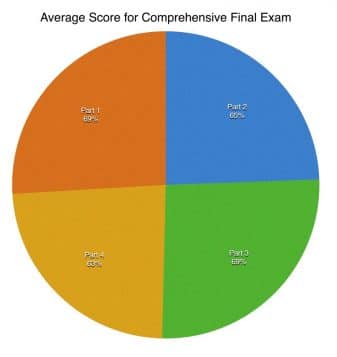Final session based edition of the course
Coursera has been using a session based course platform in the past. Courses started at fixed points in time and students wanting to take the course at a time it was not scheduled had to wait for the next run of the course. That has changed, from now on you enroll and immediately start courses on the new on-demand course platform of Coursera
The first session of Medical Neuroscience was in 2013. The course is designed for people that are enrolled in a health professions curriculum or are preparing to do so. The intellectual challenge and content level of this course is comparable to what first-year students in the graduate-level health professions would experience and the course is expected to require 16-20 hours per week of effort.
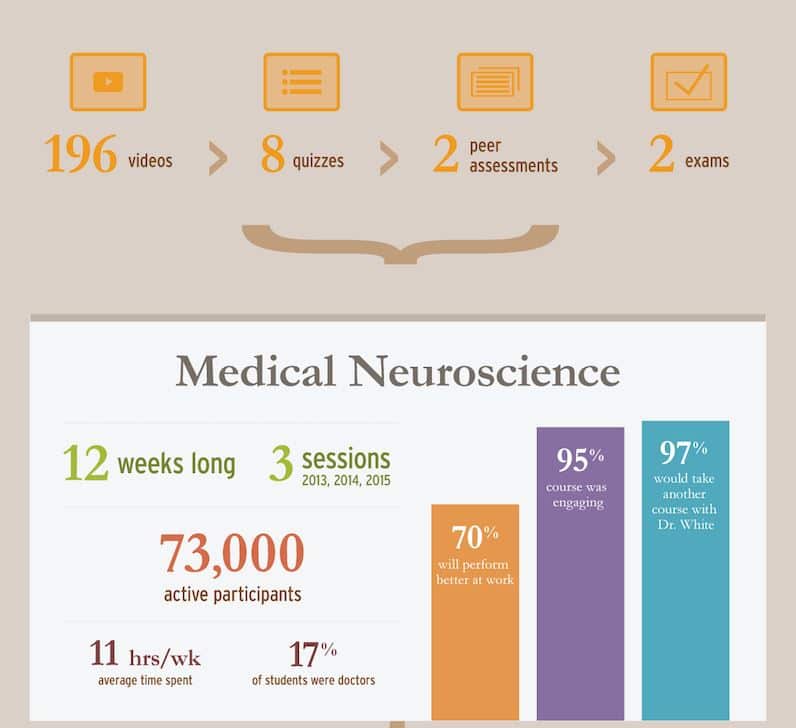
During all the sessions there good, lively and instructive discussions on the Discussion Forum.
Session 2016 Class Info
This final session on the session based platform had a page with Class Info on which this information was shared:
Worldwide reach:
Since the start of this course on January 4, 2016, Medical Neuroscience has grown to over 26,272 total learners. A total of more than 482 Signature Track learners. 179 total countries. 38% of Medical Neuroscience Learners are from emerging countries.
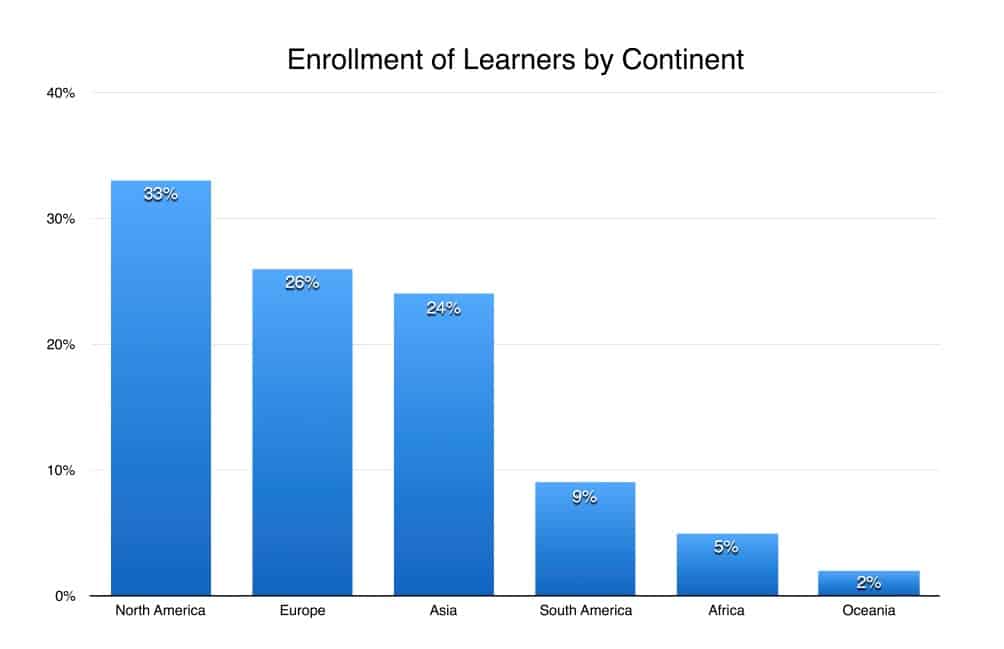
Who Are the Medical Neuroscience Learners?
“I’m a last year medical student in Colombia. About to graduate. It’s the second time I take this course. I’m planning on going to anesthesiology and I’m very interested in applying new and strengthened knowledge in this course to that field”
“I’m currently applying to medical school, but I just graduated with a degree in materials and biomaterials engineering. I’m interested in neurology and neuroscience. I think the “electrical engineering” aspect of human bodies is just so amazing and complex and there’s still a lot to be uncovered so there’s some mystery and problems to solve. I’m taking this course to give myself a better understanding of the material”
“I have completed my internal medicine M.D. And am interested to further study neurology. The beauty about the entire human body and especially the brain intrigues me”
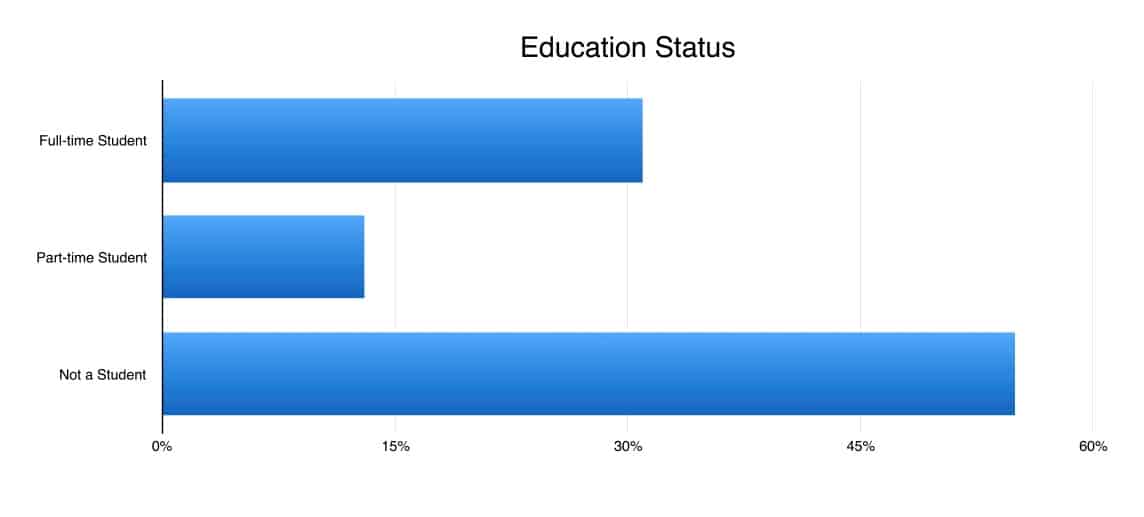
“I am a Psychology graduate. In September I will be pursuing my Master’s Degree in Clinical Neurodevelopmental Sciences and I am hoping to learn about brain with more in depth knowledge”
” I am so excited to have found this course! I’m a bartender by trade and a mother of 3 young children in a tiny town in Northern California but have always had a passion for learning. I’m especially interested in all things brain”
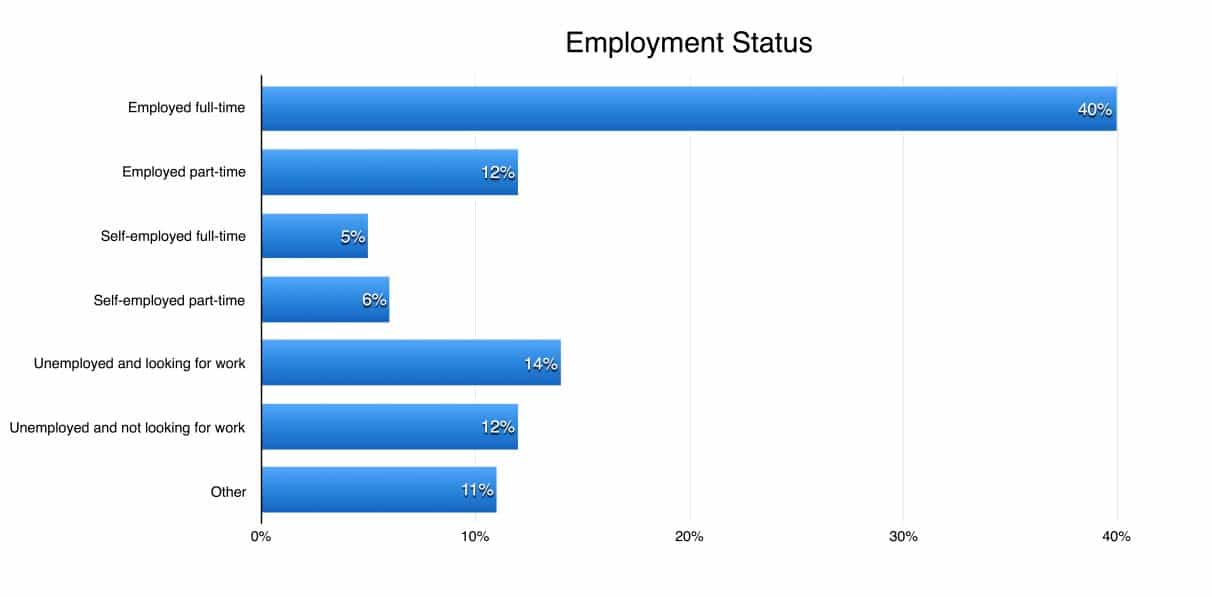
“I’m a software engineer working on software for medical scanners (CT, MRI, etc.). I spend a lot of time looking at images of human anatomy, but I don’t always understand what I see or exactly what our customers are using the software for.”
” I’m a mathematician, but I’ve always had an interest in biology and medicine. Now I am very much interested in interdisciplinary research, so any chance to learn more from these fields is a great gift”
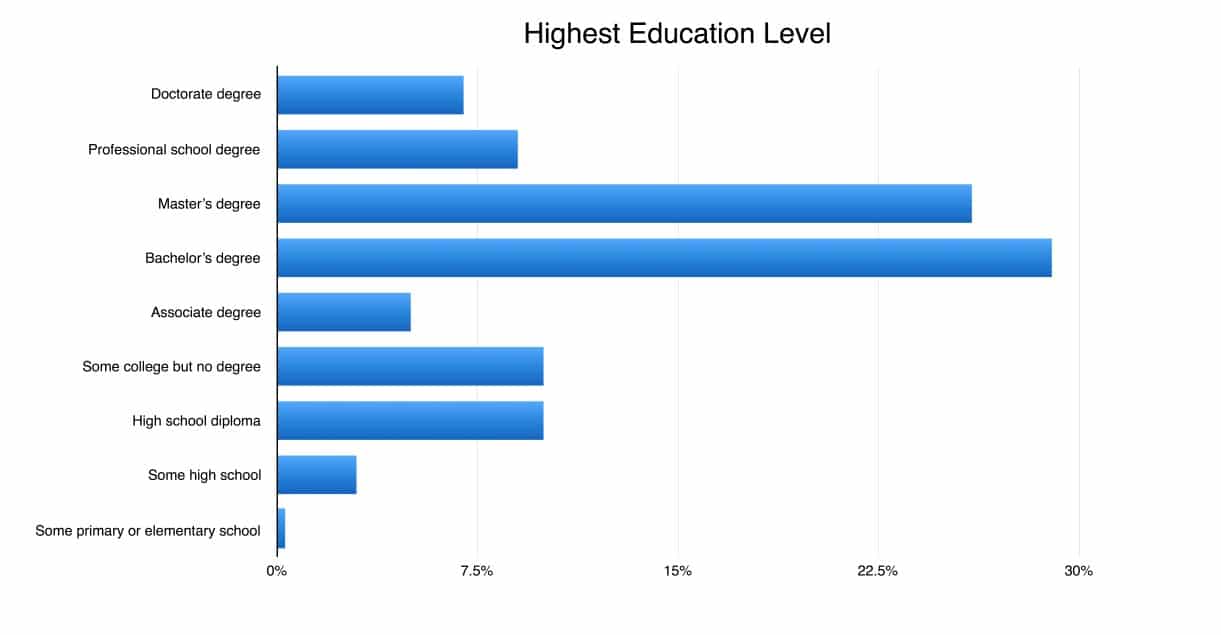
“I’m a recently turned young adult, finally have gotten through my 21 years of age. At the moment I am 22 and am living in Salvador, Bahia, Brazil. Currently, I am a med student in my fourth year and I have a dream of eventually becoming a neurosurgeon”
” I am interested in the field of Neuroscience and am considering a career path change into the field. I hope to gain more insight on this field of science. I am interested in some of the mental health issues such as Asperger’s, ADHD, tourettes , OCD’s , schizophrenia and trichotillomania”
Exam statistics
In the course there are 6 units of content, each with a multiple choice quiz.
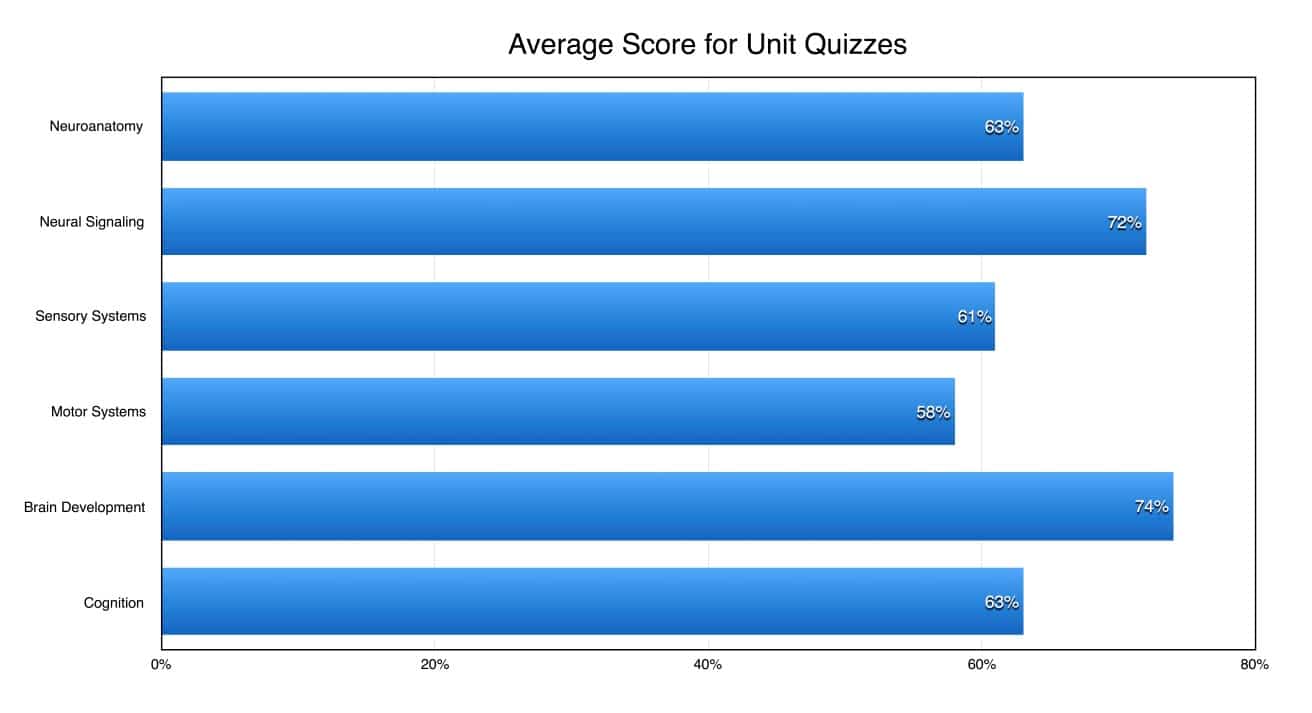
In the course there were two graded peer assignments. One were you had to draw a Brain Diagram and another one where you had to draw Touch and Pain pathways.
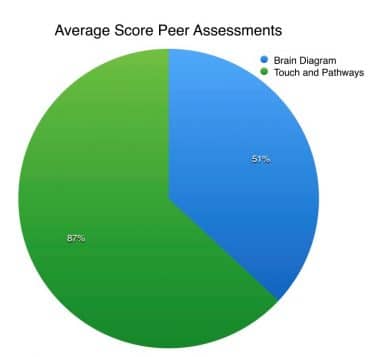
There was an exam that focused on the clinical neuroanatomy presented in the course, The Functional Anatomy Exam.
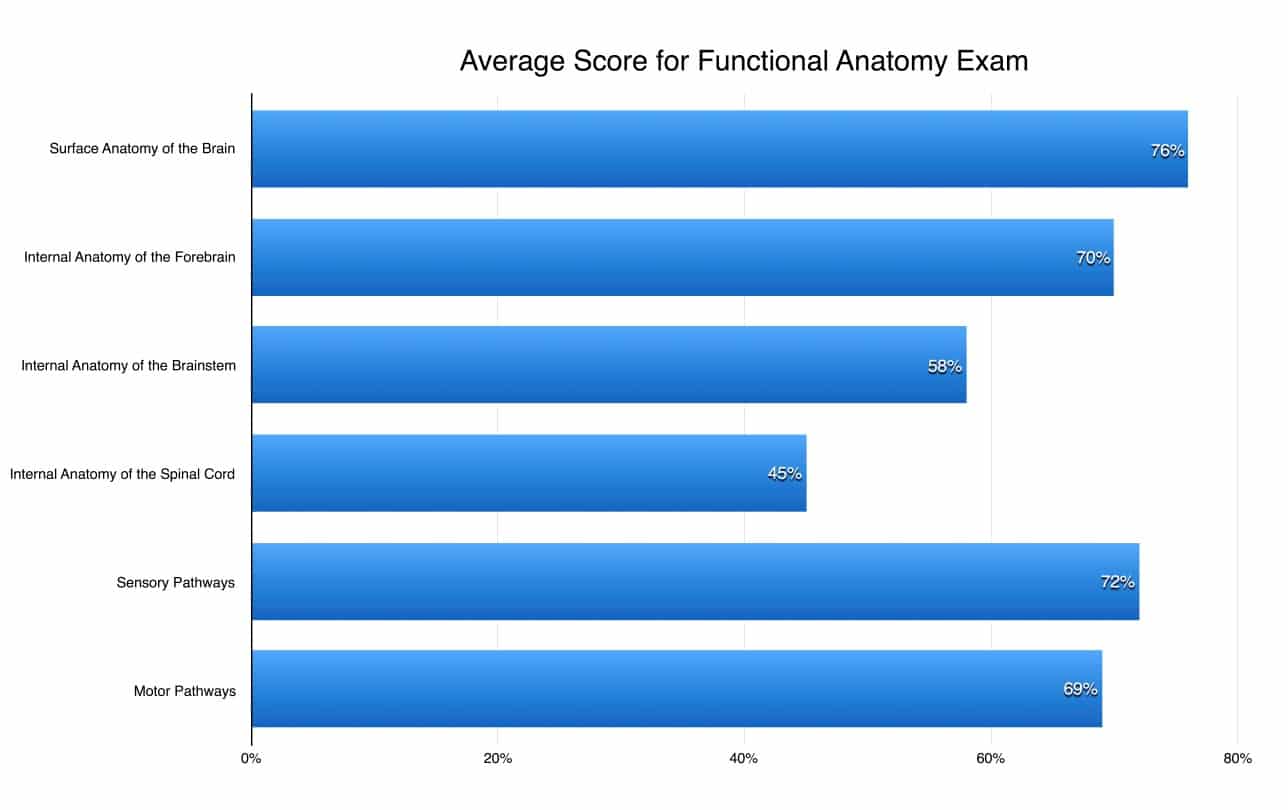
There was a Comprehensive Final Exam with a lot of questions on medical cases. Class 2-16 scored as follows:
